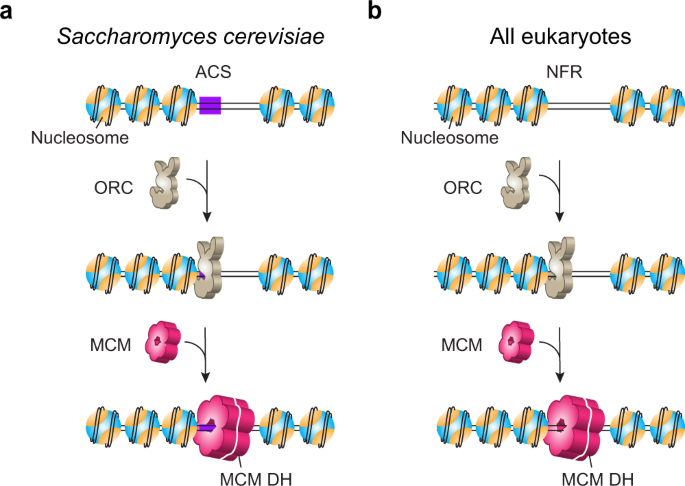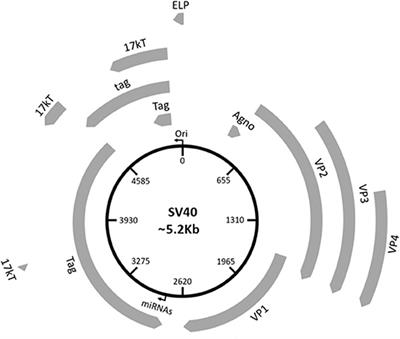
Large T antigen on the simian virus 40 origin of replication: a 3D snapshot prior to DNA replication | The EMBO Journal

A map of the SV40 origin region and the oligonucleotide sequences used... | Download Scientific Diagram

Structure of the origin‐binding domain of simian virus 40 large T antigen bound to DNA | The EMBO Journal

Mechanism of Origin DNA Recognition and Assembly of an Initiator-Helicase Complex by SV40 Large Tumor Antigen - ScienceDirect

SV40 large T antigen targets multiple cellular pathways to elicit cellular transformation | Oncogene
A Wolf in Sheep's Clothing: SV40 Co-opts Host Genome Maintenance Proteins to Replicate Viral DNA | PLOS Pathogens

Nucleosome-directed replication origin licensing independent of a consensus DNA sequence | Nature Communications

Vectors bicistronically linking a gene of interest to the SV40 large T antigen in combination with the SV40 origin of replication enhance transient protein expression and luciferase reporter activity | BioTechniques

Figure 1 from Emergence of infectious simian virus 40 whose AT tract in the replication origin/early promoter region is substituted by cellular or viral DNAs. | Semantic Scholar

Analysis of the Costructure of the Simian Virus 40 T-Antigen Origin Binding Domain with Site I Reveals a Correlation between GAGGC Spacing and Spiral Assembly | Journal of Virology
The Crystal Structure of the SV40 T-Antigen Origin Binding Domain in Complex with DNA | PLOS Biology

DNA and T-ag Sequences (A) The SV40 64-bp core-origin sequence. The... | Download Scientific Diagram

Vectors bicistronically linking a gene of interest to the SV40 large T antigen in combination with the SV40 origin of replication enhance transient protein expression and luciferase reporter activity | BioTechniques















